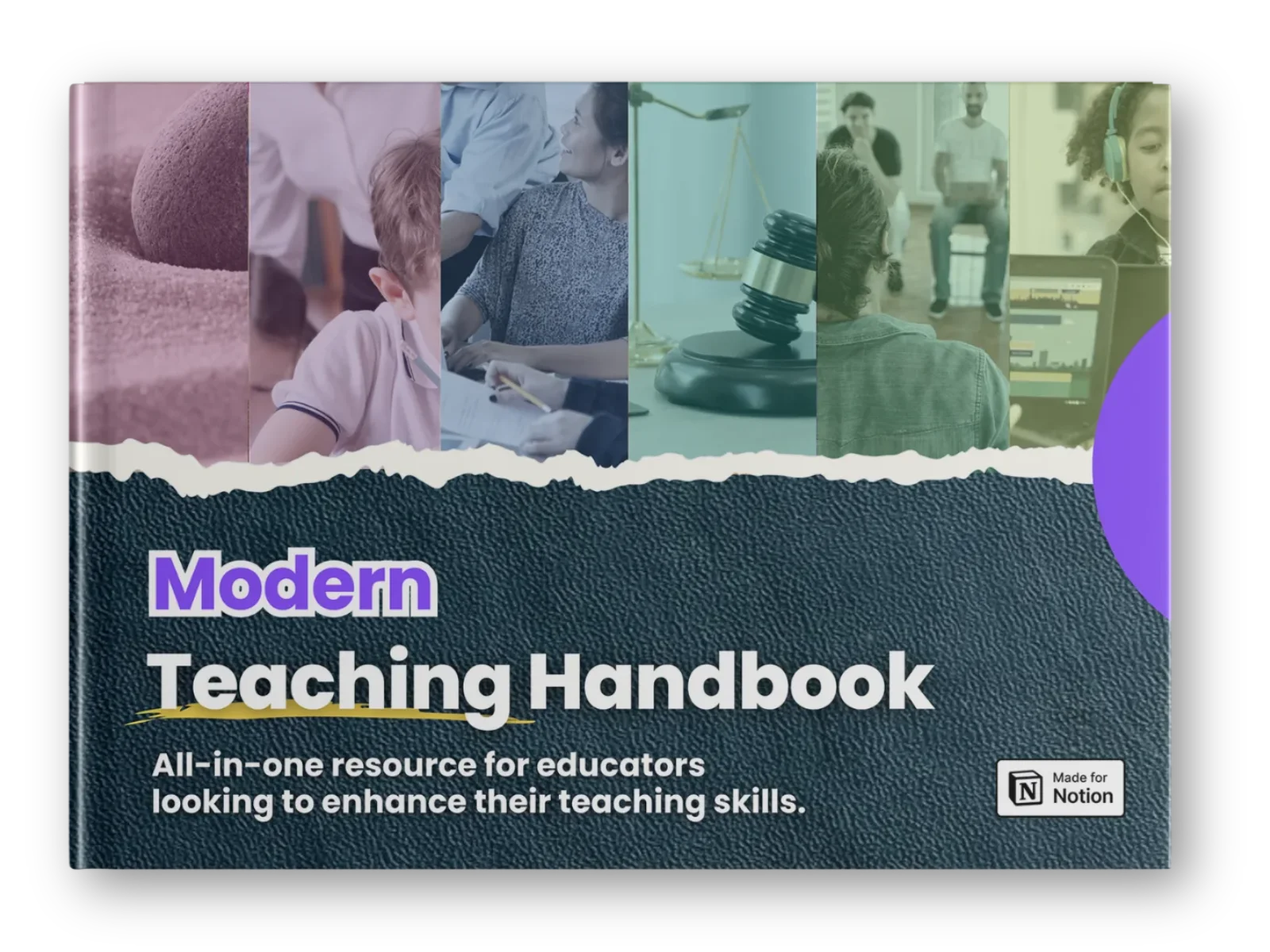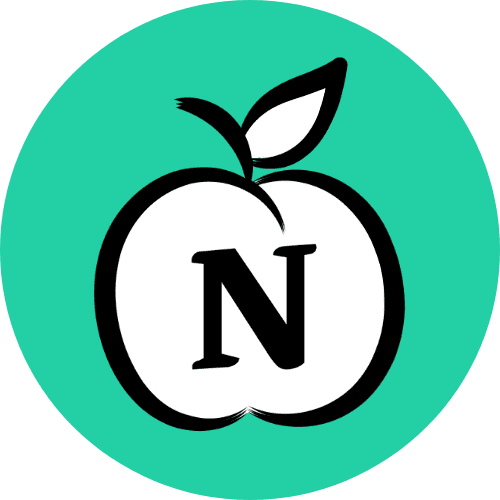Modern Teaching Handbook
Master modern education with the all-in-one resource for educators. Get your free copy now!




Leveraging New Technologies to Enhance Student Learning
Leveraging New Technologies to Enhance Student Learning
Leveraging New Technologies to Enhance Student Learning


Article by
Milo
ESL Content Coordinator & Educator
ESL Content Coordinator & Educator
All Posts
In the ever-evolving landscape of education, integrating innovative technologies into the curriculum has shifted from a novelty to a necessity. With the rapid advancement of digital tools and resources, educators and curriculum planners are constantly challenged to select, adapt, and utilize these technologies to support and enhance learning. This detailed guide aims to provide practical steps and considerations for seamlessly blending emerging technologies into educational settings, ensuring that they not only meet the current needs of the curriculum but also prepare students for the digital future.
In the ever-evolving landscape of education, integrating innovative technologies into the curriculum has shifted from a novelty to a necessity. With the rapid advancement of digital tools and resources, educators and curriculum planners are constantly challenged to select, adapt, and utilize these technologies to support and enhance learning. This detailed guide aims to provide practical steps and considerations for seamlessly blending emerging technologies into educational settings, ensuring that they not only meet the current needs of the curriculum but also prepare students for the digital future.
Modern Teaching Handbook
Master modern education with the all-in-one resource for educators. Get your free copy now!

Modern Teaching Handbook
Master modern education with the all-in-one resource for educators. Get your free copy now!

Modern Teaching Handbook
Master modern education with the all-in-one resource for educators. Get your free copy now!

Table of Contents
Title
Title
Title
Practical Approaches to Integrating Emerging Technologies into the Curriculum
Before diving into the practical approaches, it's crucial to underscore the imperative nature of technology integration in education. Beyond the oft-cited benefits of engagement and interaction, technology can facilitate personalized learning, cultivate necessary digital skills, and open up new avenues for exploration and critical thinking. However, the process isn't without its challenges, and successful integration requires a thoughtful, strategic approach. This post will navigate the complexities, providing guidance for educators and curriculum planners.
Aligning Technology with Educational Goals
Identifying Educational Goals
The first step in integrating technology is to have a clear understanding of your educational objectives. Are you aiming to develop higher-order thinking skills, enhance student engagement, or cater to diverse learning styles? These goals will serve as a compass, guiding your technology choices and helping to measure their impact.
Choosing Appropriate Technologies
It's easy to get swept up in the excitement of the latest gadgets or software. But to ensure that technology is more than just a flashy accessory, educators must make informed decisions. Consider the research behind the tools, their compatibility with your teaching style and students' learning preferences, and whether they can support your identified educational goals.
Ensuring Alignment between Technology and Curriculum
Technological integration should never be about introducing change for its own sake. Each addition should have a clear purpose and be able to enhance, complement, or even transform the curriculum. To achieve this alignment, involve technology teams, conduct regular curriculum audits, and provide teachers with the autonomy to pilot and select technologies that resonate with their pedagogical approach.
Ensuring Accessibility
Addressing Accessibility Concerns
As you bring new technologies into the educational environment, it's essential to address accessibility concerns from the start. This means ensuring that all tools and platforms are usable by students with disabilities and that they conform to accessibility standards such as WCAG.
Providing Equal Opportunities for All Students
Educators must be vigilant of the digital divide. Ensure that the resources are equitably available to all students, regardless of socioeconomic status, geographical location, or ability. This might involve providing devices, and Internet access, or even leveraging community partnerships to bridge the gap.
Accommodating Diverse Learning Needs
Technology should serve as an amplifier for diversity rather than as a barrier. Choose tools that can be customized to accommodate a range of learning needs, including multilingual support, font and contrast options, and built-in assistive technologies.
Fostering Digital Literacy
Teaching Digital Skills
Digital literacy is no longer optional—it's a foundational skill. Integrate technology in ways that directly teach students how to navigate, analyze, and create within digital environments. This involves explicit instruction in areas such as information literacy, online safety, and responsible technology use.
Promoting Critical Thinking and Problem-Solving
Technology can be a catalyst for critical thinking. Encourage students to use digital tools to tackle complex problems, synthesize information, and make informed decisions. Platforms that support collaborative problem-solving are particularly valuable in this regard.
Encouraging Creativity and Collaboration
Technology also has the power to unlock creative potential and foster global collaboration. Use tools that allow students to express themselves through various media, engage with peers beyond the classroom, and contribute to shared projects. This fosters a growth mindset and prepares students for a rapidly changing work environment.
Considerations for Implementation
Training and Professional Development
The success of any technology integration lies in the capacity of the educators. Robust training and professional development programs are non-negotiable. These should be ongoing, tailored to the specific needs of the staff, and embedded within the school's culture of continuous learning.
Infrastructure and Technical Support
Behind the scenes, your school's technical infrastructure needs to support the seamless operation of technology. Adequate Wi-Fi, up-to-date devices, and responsive technical support are essential. Regular maintenance and upgrades are critical to prevent the technology from becoming a barrier to learning.
Budgeting and Resource Allocation
Emerging technologies often come with a price tag, and budgeting for them requires foresight and strategic planning. Consider the total cost of ownership, including maintenance and training costs. Look for grant opportunities, partnerships, and other ways to maximize resources.
Embracing the Digital Future
The benefits of integrating emerging technologies into education are manifold. From enriching the learning experience to preparing students for the digital workforce, technology presents a world of opportunities. As educators and curriculum planners, it's our responsibility to navigate this landscape thoughtfully and ethically.
The call to action is clear: Embrace the digital future not as an added burden, but as a powerful ally in the pursuit of excellence in education. By following the practical approaches outlined in this post and remaining committed to a student-centered approach, we can create an educational environment that is not only relevant but truly transformative.
Challenges and Opportunities in Educational Technologies
As we journey further into the 21st century, the landscape of education has seen remarkable shifts, largely attributed to the surging tide of educational technologies. These advancements offer both opportunities and challenges, especially for those at the helm of the education sector – our dedicated educators and the visionary innovators driving change within it.
In this extensive blog post, we will explore the multifaceted essence of educational technologies, focusing on how they can enhance learning, but also what hurdles we must collectively overcome to ensure equitable, effective, and impactful education for all.
Addressing Equity Issues
The promise of educational technologies is not fulfilled until it provides equitable opportunities for all learners, regardless of their background or circumstances. Let's delve into how we can bridge the gaps and create a more inclusive educational environment.
Accessible Technology for All Students
Ensuring that every student has access to the necessary devices and internet connectivity is fundamental. The lack of such resources can exacerbate existing educational disparities, which is more pronounced in underprivileged communities. To tackle this, schools and educational institutions must be proactive in providing and maintaining a robust and up-to-date technology infrastructure.
Bridging the Digital Divide
Connecting rural and other underserved areas can significantly benefit from e-learning programs. However, connectivity is only one part of the equation; we need to address the socio-economic factors that prevent students from having the devices and physical environments conducive to learning. Creative solutions like mobile learning centers, partnerships with community organizations, and government initiatives can bridge the digital gap.
Promoting Inclusivity and Diversity
Educational technologies can be leveraged to support diverse learning needs through adaptive technologies and assistive tools. They should be designed with accessibility in mind, incorporating features that support learners with disabilities, and ensuring that content is available in varied formats and languages. The technologies should serve as a gateway to learning, allowing all students to realize their full potential.
Staying Updated with Rapid Technological Changes
The speed at which technology evolves is breathtaking, making staying current a perpetual challenge for educators. Here are strategies to embrace the pace and utilize it to the advantage of educators and students alike.
Continuous Professional Development
Institutions need to prioritize ongoing professional development programs that keep educators updated with the latest educational technologies and methodologies. By fostering a culture of continuous learning, teachers can stay agile and adept at integrating new tools into their teaching practices.
Collaboration and Networking
Educators can keep abreast of technological developments by engaging in online communities, attending workshops, and collaborating with peers. This networking not only provides a supportive environment for skill development but also opens doors for the sharing of best practices and resources.
Adapting to New Tools and Platforms
Educators are often confronted with learning management systems, adaptive software, and collaborative platforms—each requiring a degree of technical acumen. By fostering a flexible and experimental mindset, teachers can test out new tools to determine their utility and efficacy in the classroom, ultimately improving their instructional practices.
Leveraging Technology to Improve Education
When harnessed correctly, educational technologies can revolutionize the learning experience by offering personalization, improved engagement, and informed decision-making.
Personalized Learning Experiences
One of the most exciting prospects of EdTech is its potential to tailor education to individual students' learning styles and paces. Adaptive learning software can provide a differentiated approach to education, ensuring that students receive content at the right level of challenge and support, which can significantly improve learning outcomes.
Enhancing Student Engagement and Motivation
Technology can make learning more interactive and fun. Gamified learning platforms, virtual and augmented reality, and even social media can transform the educational experience by keeping students engaged and motivated. Tools that foster collaboration and creative thinking can help cultivate a deeper love for learning.
Data-Driven Decision Making
Educational technologies generate vast amounts of data that, when analyzed, can provide insights into student performance and learning trends. This data can inform instructional strategies, curriculum design, and policy decisions, ensuring that education is driven by evidence and responsive to student needs.
The path forward is clear: to harness the full potential of educational technologies, we must tackle the challenges head-on while capitalizing on the myriad opportunities they present. By focusing on equity, preparedness, and the enhancement of educational experiences, we pave the way for a future of learning that is inclusive, engaging, and empowering for all.
Tips for Educators to Stay Ahead in Educational Technology
Educational technology, or EdTech, is transforming the landscape of education. As an educator, staying informed and adaptable is crucial in navigating this dynamic domain. With new tools, trends, and approaches emerging incessantly, here are five actionable strategies to keep you primed for the future of teaching.
1. Stay Informed about New Developments
In the rapid stream of EdTech, staying up to date is not merely a choice – it's an imperative. To do so:
Follow credible industry blogs, podcasts, and top EdTech social media figures.
Engage in learning experiences beyond your institution, such as conferences, webinars, and workshops.
Join professional networks and communities, like the International Society for Technology in Education (ISTE) or the American Association of School Librarians (AASL), to tap into collective knowledge and updates.
Direct engagement with the EdTech world will keep you abreast of trends and armed with actionable insights for your classroom.
2. Adapt to Changing Educational Needs
Technology should serve a purpose: to meet evolving educational needs. Be proactive by:
Regularly assessing student and institution needs to align technology effectively.
Embracing flexible learning models and blended approaches, such as virtual labs or flipped classrooms.
Continue to assess and refine your technology integration strategies. What works now might not tomorrow.
Remember, technology is a tool, not the teacher. It's effectiveness lies in its adaptability to variable educational requirements.
3. Foster a Culture of Continuous Learning
Cultivating a culture of continuous learning within your institution is a powerful approach to EdTech adaptation. Foster this environment by:
Encouraging and enabling professional development opportunities.
Creating spaces for educators to collaborate and share successes, lessons, and best practices.
Stressing the importance of keeping up with technology, and incorporating it into your professional expectations.
The shared growth mindset will not only benefit educators but also filter down to the students, driving them to embrace learning in new ways.
4. Implement Effective Technology Integration Practices
Simply having technology in the classroom is not enough. To truly leverage its potential:
Use technology to enhance traditional teaching methods, not replace them. Think of it as adding a new color to your palette, not changing the canvas altogether.
Ensure that educators are well-trained and supported in their technology endeavors. Resistant or ill-prepared educators can be a barrier to successful implementation.
Regularly solicit student feedback and assess the data to inform and refine integration strategies. After all, they are the end-users and their perspective is invaluable.
Effective technology use requires a thoughtful approach that is constantly calibrated to optimize both teaching and learning processes.
5. Embrace Emerging Technologies
Finally, don't just keep up – look ahead. Emerging technologies like AI, AR, VR, and blockchain are already making their marks. Here's how to stay in the loop:
Keep a pulse on emerging trends by looking beyond established tools and exploring new startups and innovations.
Be open to piloting these technologies in your environments to evaluate their potential impact on learning.
Collaborate with EdTech companies and experts and participate in beta testing and review programs. Companies often seek feedback from educators, and your insights can help shape the next wave of tools.
Staying a step ahead will not only future-proof your educational practice but will also position you as a thought leader and valuable resource in your learning community.
Conclusion
In conclusion, the essence of these tips is not mere adoption of technology, but a proactive engagement with the EdTech ecosystem. It is about being the master of tools that, in turn, amplify the masterful art of teaching. So, stay informed, be adaptable, foster continuous learning, integrate wisely, and always have an eye on the future. Your dedication to staying ahead in educational technology will pay dividends in reshaping and enriching the educational experiences of your students.
Additional Resources
Videos
VR in Education: Imagine Stepping into History: Immerse yourself in the possibilities of virtual reality (VR) with this video showcasing how VR is bringing historical events to life for students.
Gamification Takes Learning by Storm: See how gamification is making learning fun and engaging, turning classrooms into interactive playgrounds where students can learn through quests and challenges.
AI-Powered Learning: Personalized Education at Your Fingertips: Discover how artificial intelligence (AI) is adapting to individual learning styles and creating personalized educational experiences.
Blog Posts
5 Emerging EdTech Trends to Watch in 2024: This blog dives into the hottest trends shaping the future of education, including augmented reality (AR), microlearning, and adaptive learning platforms.
The Rise of the Metaverse Classroom: Learning Beyond the Physical Walls: Explore the potential of the metaverse to create immersive and collaborative learning environments that transcend physical limitations.
From Textbooks to Chatbots: How Technology is Reshaping the Teacher's Role: This post examines how technology is changing the way teachers interact with students, leading to more personalized and engaging learning experiences.
Web Tools/Resources
Google for Education: Explore a suite of free and accessible tools designed to empower educators and students, including classroom management tools, interactive whiteboards, and creative learning apps.
CoSpaces Education: This platform allows educators to create immersive VR experiences for their students, covering a wide range of subjects from history and science to art and literature.
Kahoot!: Make learning fun and interactive with this popular quiz platform that allows students to answer questions in real time, creating a competitive and engaging learning environment.
Practical Approaches to Integrating Emerging Technologies into the Curriculum
Before diving into the practical approaches, it's crucial to underscore the imperative nature of technology integration in education. Beyond the oft-cited benefits of engagement and interaction, technology can facilitate personalized learning, cultivate necessary digital skills, and open up new avenues for exploration and critical thinking. However, the process isn't without its challenges, and successful integration requires a thoughtful, strategic approach. This post will navigate the complexities, providing guidance for educators and curriculum planners.
Aligning Technology with Educational Goals
Identifying Educational Goals
The first step in integrating technology is to have a clear understanding of your educational objectives. Are you aiming to develop higher-order thinking skills, enhance student engagement, or cater to diverse learning styles? These goals will serve as a compass, guiding your technology choices and helping to measure their impact.
Choosing Appropriate Technologies
It's easy to get swept up in the excitement of the latest gadgets or software. But to ensure that technology is more than just a flashy accessory, educators must make informed decisions. Consider the research behind the tools, their compatibility with your teaching style and students' learning preferences, and whether they can support your identified educational goals.
Ensuring Alignment between Technology and Curriculum
Technological integration should never be about introducing change for its own sake. Each addition should have a clear purpose and be able to enhance, complement, or even transform the curriculum. To achieve this alignment, involve technology teams, conduct regular curriculum audits, and provide teachers with the autonomy to pilot and select technologies that resonate with their pedagogical approach.
Ensuring Accessibility
Addressing Accessibility Concerns
As you bring new technologies into the educational environment, it's essential to address accessibility concerns from the start. This means ensuring that all tools and platforms are usable by students with disabilities and that they conform to accessibility standards such as WCAG.
Providing Equal Opportunities for All Students
Educators must be vigilant of the digital divide. Ensure that the resources are equitably available to all students, regardless of socioeconomic status, geographical location, or ability. This might involve providing devices, and Internet access, or even leveraging community partnerships to bridge the gap.
Accommodating Diverse Learning Needs
Technology should serve as an amplifier for diversity rather than as a barrier. Choose tools that can be customized to accommodate a range of learning needs, including multilingual support, font and contrast options, and built-in assistive technologies.
Fostering Digital Literacy
Teaching Digital Skills
Digital literacy is no longer optional—it's a foundational skill. Integrate technology in ways that directly teach students how to navigate, analyze, and create within digital environments. This involves explicit instruction in areas such as information literacy, online safety, and responsible technology use.
Promoting Critical Thinking and Problem-Solving
Technology can be a catalyst for critical thinking. Encourage students to use digital tools to tackle complex problems, synthesize information, and make informed decisions. Platforms that support collaborative problem-solving are particularly valuable in this regard.
Encouraging Creativity and Collaboration
Technology also has the power to unlock creative potential and foster global collaboration. Use tools that allow students to express themselves through various media, engage with peers beyond the classroom, and contribute to shared projects. This fosters a growth mindset and prepares students for a rapidly changing work environment.
Considerations for Implementation
Training and Professional Development
The success of any technology integration lies in the capacity of the educators. Robust training and professional development programs are non-negotiable. These should be ongoing, tailored to the specific needs of the staff, and embedded within the school's culture of continuous learning.
Infrastructure and Technical Support
Behind the scenes, your school's technical infrastructure needs to support the seamless operation of technology. Adequate Wi-Fi, up-to-date devices, and responsive technical support are essential. Regular maintenance and upgrades are critical to prevent the technology from becoming a barrier to learning.
Budgeting and Resource Allocation
Emerging technologies often come with a price tag, and budgeting for them requires foresight and strategic planning. Consider the total cost of ownership, including maintenance and training costs. Look for grant opportunities, partnerships, and other ways to maximize resources.
Embracing the Digital Future
The benefits of integrating emerging technologies into education are manifold. From enriching the learning experience to preparing students for the digital workforce, technology presents a world of opportunities. As educators and curriculum planners, it's our responsibility to navigate this landscape thoughtfully and ethically.
The call to action is clear: Embrace the digital future not as an added burden, but as a powerful ally in the pursuit of excellence in education. By following the practical approaches outlined in this post and remaining committed to a student-centered approach, we can create an educational environment that is not only relevant but truly transformative.
Challenges and Opportunities in Educational Technologies
As we journey further into the 21st century, the landscape of education has seen remarkable shifts, largely attributed to the surging tide of educational technologies. These advancements offer both opportunities and challenges, especially for those at the helm of the education sector – our dedicated educators and the visionary innovators driving change within it.
In this extensive blog post, we will explore the multifaceted essence of educational technologies, focusing on how they can enhance learning, but also what hurdles we must collectively overcome to ensure equitable, effective, and impactful education for all.
Addressing Equity Issues
The promise of educational technologies is not fulfilled until it provides equitable opportunities for all learners, regardless of their background or circumstances. Let's delve into how we can bridge the gaps and create a more inclusive educational environment.
Accessible Technology for All Students
Ensuring that every student has access to the necessary devices and internet connectivity is fundamental. The lack of such resources can exacerbate existing educational disparities, which is more pronounced in underprivileged communities. To tackle this, schools and educational institutions must be proactive in providing and maintaining a robust and up-to-date technology infrastructure.
Bridging the Digital Divide
Connecting rural and other underserved areas can significantly benefit from e-learning programs. However, connectivity is only one part of the equation; we need to address the socio-economic factors that prevent students from having the devices and physical environments conducive to learning. Creative solutions like mobile learning centers, partnerships with community organizations, and government initiatives can bridge the digital gap.
Promoting Inclusivity and Diversity
Educational technologies can be leveraged to support diverse learning needs through adaptive technologies and assistive tools. They should be designed with accessibility in mind, incorporating features that support learners with disabilities, and ensuring that content is available in varied formats and languages. The technologies should serve as a gateway to learning, allowing all students to realize their full potential.
Staying Updated with Rapid Technological Changes
The speed at which technology evolves is breathtaking, making staying current a perpetual challenge for educators. Here are strategies to embrace the pace and utilize it to the advantage of educators and students alike.
Continuous Professional Development
Institutions need to prioritize ongoing professional development programs that keep educators updated with the latest educational technologies and methodologies. By fostering a culture of continuous learning, teachers can stay agile and adept at integrating new tools into their teaching practices.
Collaboration and Networking
Educators can keep abreast of technological developments by engaging in online communities, attending workshops, and collaborating with peers. This networking not only provides a supportive environment for skill development but also opens doors for the sharing of best practices and resources.
Adapting to New Tools and Platforms
Educators are often confronted with learning management systems, adaptive software, and collaborative platforms—each requiring a degree of technical acumen. By fostering a flexible and experimental mindset, teachers can test out new tools to determine their utility and efficacy in the classroom, ultimately improving their instructional practices.
Leveraging Technology to Improve Education
When harnessed correctly, educational technologies can revolutionize the learning experience by offering personalization, improved engagement, and informed decision-making.
Personalized Learning Experiences
One of the most exciting prospects of EdTech is its potential to tailor education to individual students' learning styles and paces. Adaptive learning software can provide a differentiated approach to education, ensuring that students receive content at the right level of challenge and support, which can significantly improve learning outcomes.
Enhancing Student Engagement and Motivation
Technology can make learning more interactive and fun. Gamified learning platforms, virtual and augmented reality, and even social media can transform the educational experience by keeping students engaged and motivated. Tools that foster collaboration and creative thinking can help cultivate a deeper love for learning.
Data-Driven Decision Making
Educational technologies generate vast amounts of data that, when analyzed, can provide insights into student performance and learning trends. This data can inform instructional strategies, curriculum design, and policy decisions, ensuring that education is driven by evidence and responsive to student needs.
The path forward is clear: to harness the full potential of educational technologies, we must tackle the challenges head-on while capitalizing on the myriad opportunities they present. By focusing on equity, preparedness, and the enhancement of educational experiences, we pave the way for a future of learning that is inclusive, engaging, and empowering for all.
Tips for Educators to Stay Ahead in Educational Technology
Educational technology, or EdTech, is transforming the landscape of education. As an educator, staying informed and adaptable is crucial in navigating this dynamic domain. With new tools, trends, and approaches emerging incessantly, here are five actionable strategies to keep you primed for the future of teaching.
1. Stay Informed about New Developments
In the rapid stream of EdTech, staying up to date is not merely a choice – it's an imperative. To do so:
Follow credible industry blogs, podcasts, and top EdTech social media figures.
Engage in learning experiences beyond your institution, such as conferences, webinars, and workshops.
Join professional networks and communities, like the International Society for Technology in Education (ISTE) or the American Association of School Librarians (AASL), to tap into collective knowledge and updates.
Direct engagement with the EdTech world will keep you abreast of trends and armed with actionable insights for your classroom.
2. Adapt to Changing Educational Needs
Technology should serve a purpose: to meet evolving educational needs. Be proactive by:
Regularly assessing student and institution needs to align technology effectively.
Embracing flexible learning models and blended approaches, such as virtual labs or flipped classrooms.
Continue to assess and refine your technology integration strategies. What works now might not tomorrow.
Remember, technology is a tool, not the teacher. It's effectiveness lies in its adaptability to variable educational requirements.
3. Foster a Culture of Continuous Learning
Cultivating a culture of continuous learning within your institution is a powerful approach to EdTech adaptation. Foster this environment by:
Encouraging and enabling professional development opportunities.
Creating spaces for educators to collaborate and share successes, lessons, and best practices.
Stressing the importance of keeping up with technology, and incorporating it into your professional expectations.
The shared growth mindset will not only benefit educators but also filter down to the students, driving them to embrace learning in new ways.
4. Implement Effective Technology Integration Practices
Simply having technology in the classroom is not enough. To truly leverage its potential:
Use technology to enhance traditional teaching methods, not replace them. Think of it as adding a new color to your palette, not changing the canvas altogether.
Ensure that educators are well-trained and supported in their technology endeavors. Resistant or ill-prepared educators can be a barrier to successful implementation.
Regularly solicit student feedback and assess the data to inform and refine integration strategies. After all, they are the end-users and their perspective is invaluable.
Effective technology use requires a thoughtful approach that is constantly calibrated to optimize both teaching and learning processes.
5. Embrace Emerging Technologies
Finally, don't just keep up – look ahead. Emerging technologies like AI, AR, VR, and blockchain are already making their marks. Here's how to stay in the loop:
Keep a pulse on emerging trends by looking beyond established tools and exploring new startups and innovations.
Be open to piloting these technologies in your environments to evaluate their potential impact on learning.
Collaborate with EdTech companies and experts and participate in beta testing and review programs. Companies often seek feedback from educators, and your insights can help shape the next wave of tools.
Staying a step ahead will not only future-proof your educational practice but will also position you as a thought leader and valuable resource in your learning community.
Conclusion
In conclusion, the essence of these tips is not mere adoption of technology, but a proactive engagement with the EdTech ecosystem. It is about being the master of tools that, in turn, amplify the masterful art of teaching. So, stay informed, be adaptable, foster continuous learning, integrate wisely, and always have an eye on the future. Your dedication to staying ahead in educational technology will pay dividends in reshaping and enriching the educational experiences of your students.
Additional Resources
Videos
VR in Education: Imagine Stepping into History: Immerse yourself in the possibilities of virtual reality (VR) with this video showcasing how VR is bringing historical events to life for students.
Gamification Takes Learning by Storm: See how gamification is making learning fun and engaging, turning classrooms into interactive playgrounds where students can learn through quests and challenges.
AI-Powered Learning: Personalized Education at Your Fingertips: Discover how artificial intelligence (AI) is adapting to individual learning styles and creating personalized educational experiences.
Blog Posts
5 Emerging EdTech Trends to Watch in 2024: This blog dives into the hottest trends shaping the future of education, including augmented reality (AR), microlearning, and adaptive learning platforms.
The Rise of the Metaverse Classroom: Learning Beyond the Physical Walls: Explore the potential of the metaverse to create immersive and collaborative learning environments that transcend physical limitations.
From Textbooks to Chatbots: How Technology is Reshaping the Teacher's Role: This post examines how technology is changing the way teachers interact with students, leading to more personalized and engaging learning experiences.
Web Tools/Resources
Google for Education: Explore a suite of free and accessible tools designed to empower educators and students, including classroom management tools, interactive whiteboards, and creative learning apps.
CoSpaces Education: This platform allows educators to create immersive VR experiences for their students, covering a wide range of subjects from history and science to art and literature.
Kahoot!: Make learning fun and interactive with this popular quiz platform that allows students to answer questions in real time, creating a competitive and engaging learning environment.
Modern Teaching Handbook
Master modern education with the all-in-one resource for educators. Get your free copy now!

Modern Teaching Handbook
Master modern education with the all-in-one resource for educators. Get your free copy now!

Modern Teaching Handbook
Master modern education with the all-in-one resource for educators. Get your free copy now!

All Posts
Continue Reading
2024 Notion4Teachers. All Rights Reserved.
2024 Notion4Teachers. All Rights Reserved.
2024 Notion4Teachers. All Rights Reserved.
2024 Notion4Teachers. All Rights Reserved.







